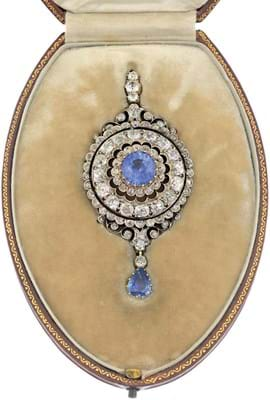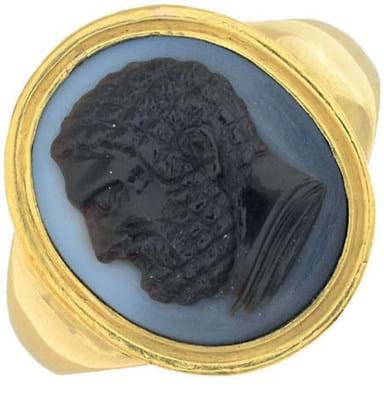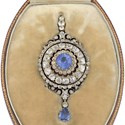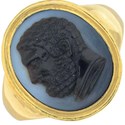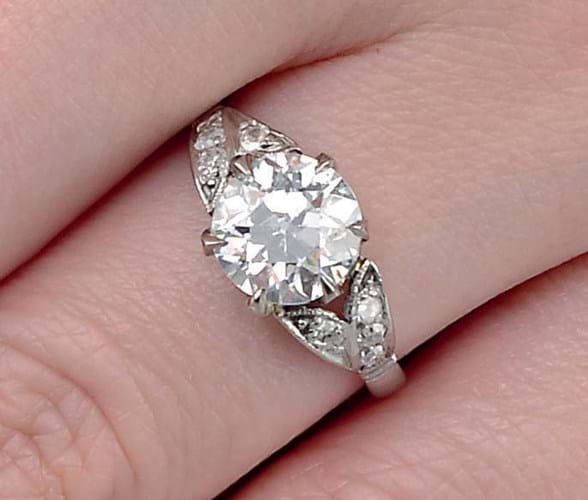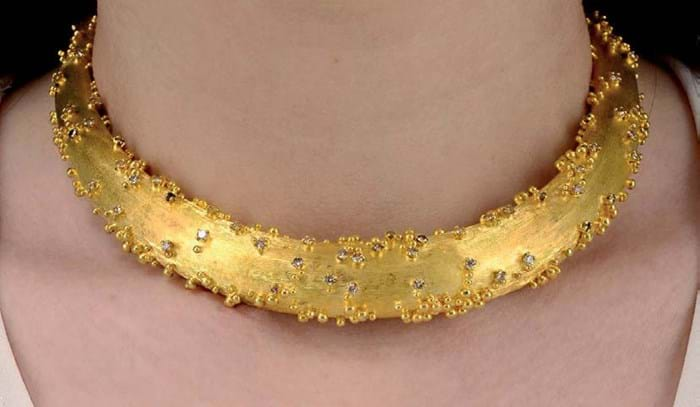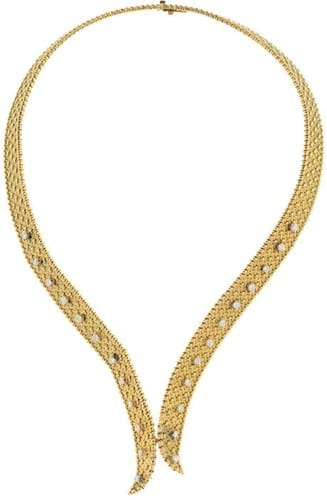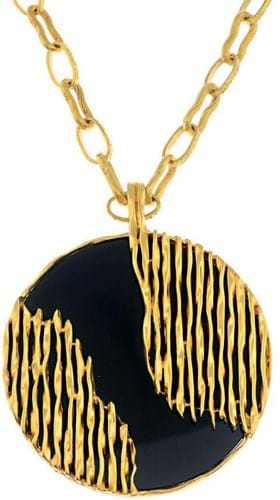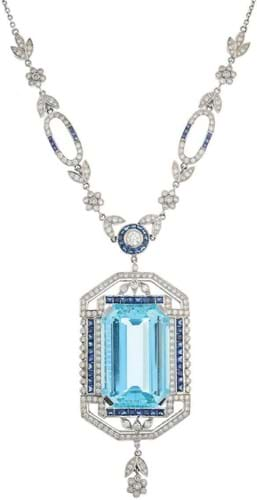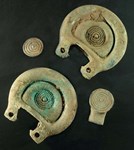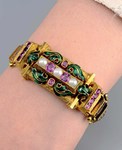Lockdown provided a new set of challenges for auction houses.
Fellows was one of a number of firms that found ways to continue operating within government guidelines – first with family members hunkering down in the living room of managing director Stephen Whittaker to run a live online-only sale on March 26 and then by championing the timed online model.
Combined, the firm was able to disperse nearly 5000 lots across eight jewellery and gemstones sales during the lockdown period, realising an overall hammer total of £1.7m. It also held sales of watches and designer goods.
However, with lockdown restrictions finally easing, the firm held its first public auction since March at company HQ in Birmingham’s Jewellery Quarter on July 23.
Fifty-five people travelled to view this Fine Jewellery sale – 38 in Fellows’ London office and 17 in Birmingham – although all bidders chose to bid remotely on the day.
The 164 commission bidders bought close to half of the lots (49%), with the lion’s share of the remainder (45%) going to more than 700 faces registered online. Whittaker was the auctioneer for the entire 448 lots – finding buyers for 83% of consignments and running up a hammer total of around £1m.
The modern…
Several diamond rings – most of them recently made and making a quick return to the market – brought in the biggest money. These included, at a hammer price of £103,000, an old-cut single-stone ring hallmarked for London 2018 that came with a report from the Gemological Institute of America (GIA) stating it weighs 8.07cts and is graded I colour and VS1 clarity.
Bought new at retail, a ring with a stone like this (near colourless and eye clean) would command considerably more than £30,000 per carat – illustrating why buyers of modern stones should check out well-catalogued second-hand items at auction.
…and the vintage

A 1970s 18ct gold ‘plaited’ bracelet, by Maison Wolfers – £3100 at Fellows.
Those looking for vintage and antique pieces were not disappointed. Sixties and Seventies style is now very much part of the collecting zeitgeist and Fellows has enjoyed plenty of success in this area.
“The market for vintage pieces by named designers is going from strength to strength. They hold a level of value rarely seen in unsigned pieces of the same era. We’ve had particularly strong results for British designers, notably Grima, and items from European houses such as Lenfant and Wolfers have also been in high demand,” said Nicola Whittaker, jewellery specialist at Fellows.
Retro pieces by Georges Lenfant are now common currency for the best of London’s antique and vintage jewellery dealers.
As the anonymous maker of many Art Deco jewels retailed by some of the top Parisian houses of the Place Vendome and rue de la Paix, the firm is one of the unsung heroes of pre-war French jewellery but today is better known for the complex woven gold chain bracelets and necklaces made with multiple gold wires much later in the century.
A good example here in textured gold with brilliant-cut diamond highlights was hammered just below estimate at £4800 (estimate £5000-7000). These signature wares of the 1960s-70s were made under the aegis of Jacques Lenfant, the son of the founder who joined the workshop in 1915, aged just 11.
Similar aesthetic impulses inspired two other Seventies pieces pictured here: an 18ct gold collar punctuated by occasional tiny diamond accents by Andrew Grima (London, 1974) sold within estimate at £6200 and a ‘plaited’ 18ct gold bracelet by Maison Wolfers in Brussels knocked down at £3100.
Kutchinsky brand
The Kutchinsky brand dates back more than a century (Hirsch Kutchinsky and son Morris fled Poland for London’s East End in 1893) but it too is associated with the products of a much later era – the ostentatious range of 18ct gold and boldly coloured gemstone jewellery that arrived with the end of wartime restrictions. Semi-precious stones were a favourite: particularly turquoise, coral and, in the case of an 18ct gold pendant sold at a mid-estimate £2800, black onyx.
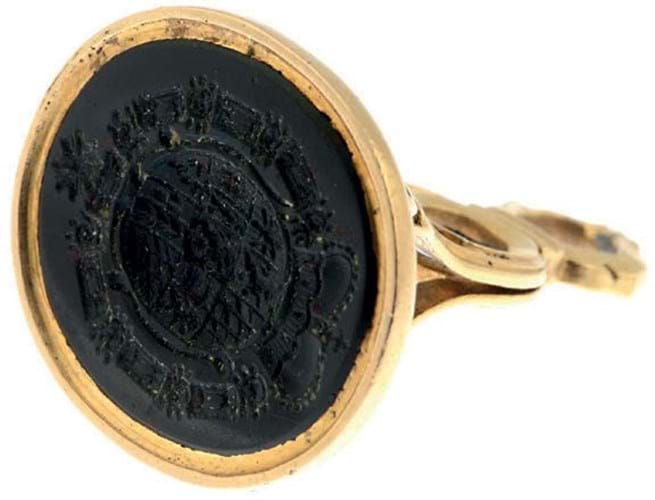
Bloodstone seal carved with the coat of arms of Frederick Michael, Count Palatine of Zweibrucken-Birkenfield – £2700 at Fellows.
Interest in glyphic art, which reached its collecting apogee during the Grand Tour era, is also resurgent once more.
A Georgian 18ct gold carved bloodstone seal was carved with the coat of arms of Frederick Michael, Count Palatine of Zweibrucken-Birkenfield (1724- 64) and father of the future king Maximilian I.
Frederick Michael was regarded in the courts of Europe as the most handsome and gallant soldier of his time, assuming the role of imperial field marshal during the Seven Years war against Frederick the Great.
Offered in a fitted case for the late Bond Street dealer David Lavender, it took £2700 (estimate £1000-1500).
Considered to be later copies, two pieces were made in the full-blown French Art Deco style.
Strongest performer
The strongest performer in the sale against estimate was a geometric aquamarine, sapphire and brilliant-cut diamond necklace. Including a central stone of good clarity with an estimated weight of over 63cts, it brought £13,000 against an estimate of £2000-3000.
A necklace, set with leaf carved Indian rubies, emeralds and sapphires sold at £14,000 – double the top estimate. This was designed in the ‘tutti-frutti’ style made famous by Cartier (an original piece would be deep into six figures) but again was perhaps just 20 or 30 years old.


